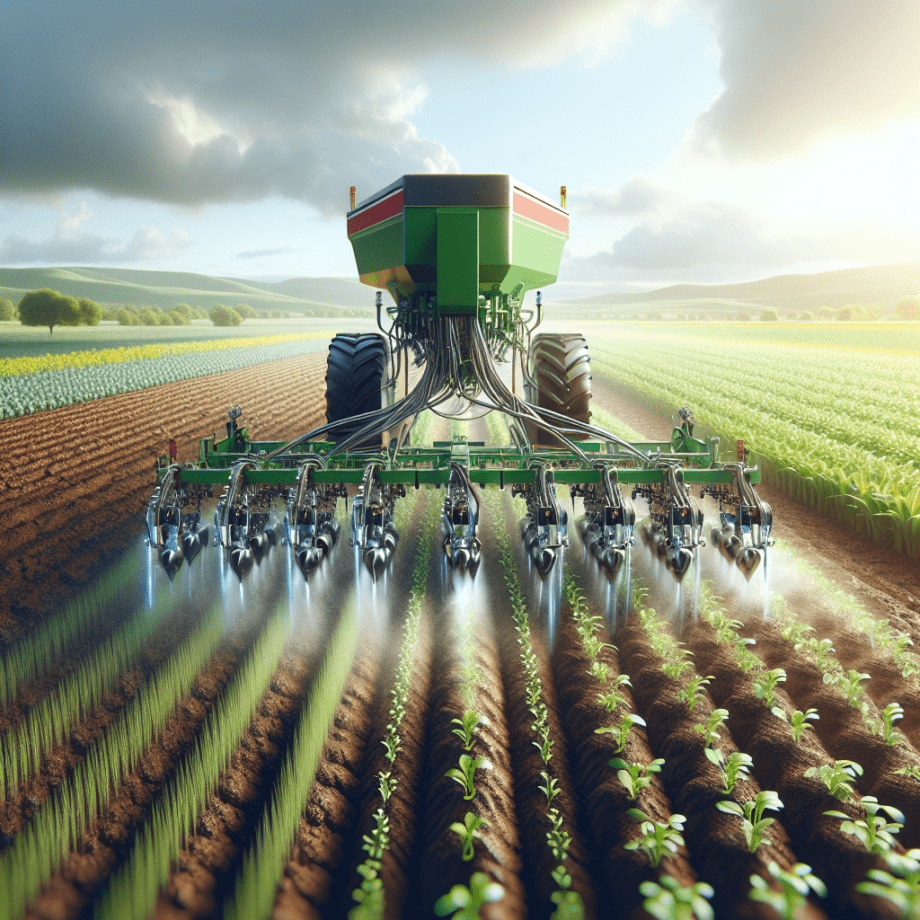No-till seed drills have revolutionized modern agriculture by offering numerous benefits for soil health and crop production. This article delves into the advantages of using no-till seed drills, exploring how they contribute to sustainable farming practices and improved crop yields.
Understanding No-Till Seed Drills
No-till seed drills are specialized agricultural machines designed to plant seeds directly into the soil without the need for traditional tilling. Unlike conventional methods that involve plowing and turning the soil, no-till seed drills create minimal soil disturbance. This technique involves cutting a narrow slot into the soil, placing the seed, and covering it with soil, all in one pass.
Components and Functionality
No-till seed drills consist of several key components that work together to ensure efficient planting. These include:
- Cutting Discs: These discs slice through the soil and crop residue, creating a narrow furrow for seed placement.
- Seed Metering System: This system accurately measures and dispenses seeds into the furrow at a consistent rate.
- Press Wheels: These wheels press the soil over the seeds, ensuring good seed-to-soil contact and promoting germination.
- Fertilizer Applicators: Some no-till seed drills are equipped with fertilizer applicators that place nutrients alongside the seeds, enhancing early plant growth.
The combination of these components allows no-till seed drills to plant seeds efficiently while preserving soil structure and moisture.
Benefits for Soil Health
One of the primary advantages of no-till seed drills is their positive impact on soil health. Traditional tilling methods can lead to soil erosion, compaction, and loss of organic matter. In contrast, no-till farming practices help maintain soil integrity and promote a healthier ecosystem.
Reduced Soil Erosion
No-till seed drills minimize soil disturbance, which significantly reduces the risk of soil erosion. By leaving crop residues on the surface, these machines protect the soil from wind and water erosion. This is particularly important in regions prone to heavy rainfall or strong winds, where soil erosion can be a major concern.
Improved Soil Structure
Continuous tilling can lead to soil compaction, making it difficult for roots to penetrate and access nutrients. No-till seed drills help maintain soil structure by preserving natural soil aggregates. This results in better water infiltration, root development, and overall soil fertility.
Enhanced Organic Matter
No-till farming practices promote the accumulation of organic matter in the soil. Crop residues left on the surface decompose over time, enriching the soil with essential nutrients. Increased organic matter improves soil fertility, water retention, and microbial activity, creating a more favorable environment for plant growth.
Benefits for Crop Production
In addition to improving soil health, no-till seed drills offer several benefits for crop production. These machines contribute to higher crop yields, reduced input costs, and more sustainable farming practices.
Higher Crop Yields
No-till seed drills create optimal conditions for seed germination and early plant growth. By preserving soil moisture and structure, these machines ensure that seeds have access to the necessary nutrients and water. This leads to healthier plants and higher crop yields, even in challenging growing conditions.
Reduced Input Costs
No-till farming practices can lead to significant cost savings for farmers. By eliminating the need for multiple tillage operations, farmers can reduce fuel and labor costs. Additionally, the improved soil health and fertility associated with no-till farming can reduce the need for chemical fertilizers and pesticides, further lowering input costs.
Sustainable Farming Practices
No-till seed drills support sustainable farming practices by promoting soil conservation and reducing the environmental impact of agriculture. By minimizing soil disturbance and preserving organic matter, these machines help sequester carbon in the soil, mitigating the effects of climate change. Furthermore, no-till farming practices can improve water quality by reducing runoff and preventing the leaching of nutrients into water bodies.
Challenges and Considerations
While no-till seed drills offer numerous benefits, there are also challenges and considerations that farmers must address when adopting this technology.
Initial Investment
The cost of purchasing no-till seed drills can be a significant barrier for some farmers. These machines are often more expensive than traditional tillage equipment. However, the long-term benefits and cost savings associated with no-till farming can offset the initial investment.
Residue Management
Managing crop residues can be challenging in no-till systems. Excessive residue can interfere with seed placement and germination. Farmers may need to adopt residue management practices, such as chopping or spreading residues evenly, to ensure successful planting.
Weed Control
No-till farming can lead to increased weed pressure, as weed seeds are not buried and can germinate on the soil surface. Farmers may need to implement integrated weed management strategies, including cover crops, crop rotation, and targeted herbicide applications, to control weeds effectively.
Conclusion
No-till seed drills represent a significant advancement in agricultural machinery, offering numerous benefits for soil health and crop production. By minimizing soil disturbance and promoting sustainable farming practices, these machines contribute to improved soil structure, reduced erosion, and higher crop yields. While there are challenges associated with adopting no-till farming, the long-term benefits make it a worthwhile investment for farmers seeking to enhance soil health and achieve sustainable crop production.
